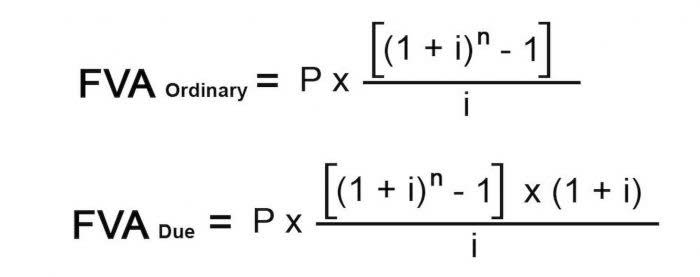
Get stock recommendations, portfolio guidance, and more from The Motley Fool’s premium services. This advisory service is geared toward wealthy individuals and their financial needs. Another approach to streamlining processes is by implementing Lean principles. These help businesses identify activities that generate value and eliminate those that don’t contribute meaningfully to the bottom line. One way to streamline processes is by utilizing technology tools that automate routine tasks such as inventory management, order processing, or invoicing.
Would you prefer to work with a financial professional remotely or in-person?
It is the profit remaining after subtracting the cost of goods sold (COGS). This was partially offset by continued strong growth in the soup brands in the UK. The increase gross margin accounting was driven by strength in soup and private label spreads and drizzles in the UK, partially offset by softness in Linda McCartney’s® Foods and Yves® plant-based meat free.
- Compare your prices against competitors and calculate whether you can match or compete.
- Weakness at these levels indicates that money is being lost on basic operations, leaving little revenue for debt repayments and taxes.
- A positive gross margin proves that a company’s sales exceed their production costs.
- Start by using the gross profit margin formula to calculate your gross profit margin percentage.
- COGS is the cost of goods sold and is subtracted from revenue to get the gross margin, which is then divided by the revenue to get the ratio amount.
- Get free ecommerce tips, inspiration, and resources delivered directly to your inbox.
The gross profit margin formula
But by tracking your expenses, you’ll be able to identify unnecessary expenses that can be trimmed to increase your profit margin. The gross margin is an important and widely used financial analysis ratio. These produce or sell goods and services that are always in demand, like food and beverages, household products, and personal care products. Another way to interpret a gross margin number is to compare it to the sector average and top competitors during the same period, such as annually or quarterly. One way to interpret a company’s gross margin is to compare it to previous calculations and see how it’s trending over time. In general, a higher gross margin is better, so a company should strive to have a gross margin that’s similar to or higher than its peers and industry average.
Gross Profit for New Companies
A low gross margin ratio does not necessarily indicate a poorly performing company. It is important to compare ratios between companies in the same industry rather than comparing them across industries. Net profit margin is a key financial metric indicating a company’s financial health. Also known as net margin, it shows the profit generated as a percentage of the company’s revenue. Simply put, net profit margin is the ratio of its net profit to its revenues. Gross profit margin is a financial metric analysts use to assess a company’s financial health.

- Gross profit does not consider the proportion of profit relative to net sales revenue.
- The decrease in adjusted gross margin was driven primarily by cost inflation and deleverage on lower sales volume, partially offset by productivity and pricing.
- You may find it easier to calculate your gross profit margin using computer software.
- The fixed cost component is fully covered when sales volume grows, allowing additional sales to pass through as profit.
- When analyzing a company a good analyst will look at a wide range of ratios, financial metrics, and other measures of performance.
Personal CareThe fiscal fourth quarter organic net sales decline was 17% year-over-year. The decline was driven by softness across the portfolio and by the impact of portfolio simplification as we continue to focus on the execution of our stabilization plan. For fiscal 2024, the organic net sales decline was 20% versus the prior year, due to softness across most of the portfolio as we continue to focus on the execution of our stabilization plan. SnacksFiscal fourth quarter organic net sales growth was flat year-over-year, driven primarily by growth in Terra® and Garden Veggie Snacks™, offset by softness in Hartley’s® Jelly.
- A high gross profit margin means that the company did well in managing its cost of sales.
- Factors like economies of scale, bulk purchasing advantages, and production efficiencies can lead to a more favorable cost structure, enhancing the gross margin.
- SnacksFiscal fourth quarter organic net sales growth was flat year-over-year, driven primarily by growth in Terra® and Garden Veggie Snacks™, offset by softness in Hartley’s® Jelly.
- It sheds light on how much money a company earns after factoring in production and sales costs.
Part 2: Your Current Nest Egg

The healthy gross and operating profit margins in the above example enabled Starbucks to maintain decent profits while still meeting all of its other financial obligations. Gross profit margin is an important metric that measures the revenue your company retains after deducting basic operating costs. It’s an indicator of a company’s financial health and can be used to track growth and create strategies for growing profits. A company’s gross margin is 35% if it retains $0.35 from each dollar of revenue generated. Companies strive for high gross profit margins, as they indicate greater degrees of profitability.
By analyzing trends in sales volume, pricing strategies or cost-reduction initiatives can be implemented to maximize profits while maintaining high levels of customer satisfaction. Government regulations, tariffs, and trade barriers can influence the cost structure. For example, tariffs on imported goods can increase the COGS, reducing the gross profit.
Comparison With Industry Averages

For instance, a company with a seemingly healthy net income on the bottom line could actually be dying. The gross profit percentage could be negative, and the net income could be coming from other one-time operations. The company could be losing money on every product they produce, but staying a float because of a one-time insurance payout.
